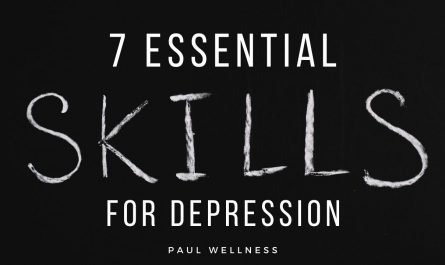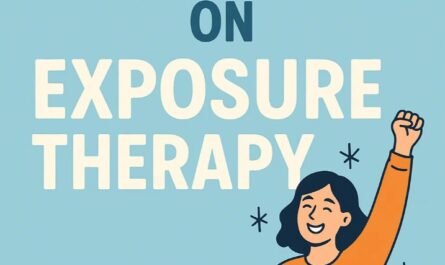Depression and anxiety seem like polar opposites when you read their symptoms. Anxiety is known for high-energy states, fear, and jitteriness. Depression is known for low-energy states, emotional numbness or agitation, and commonly has slower body movements and speech. Yet, the comorbidity of these two is astounding with most estimates showing a 40% or higher relationship with each other. That means that nearly half of those with one will develop the other.
Why is this? Why are two seemingly different mental health concerns so intertwined? Also, are there any symptoms that they share? I’m going to discuss why depression and anxiety are commonly co-occurring and how you know when you’re facing both simultaneously. I’ll also cover some common treatment methods so that you can heal from this dangerous duo.
What is Depression?
Depression is a clinical mental health condition often characterized by a depressed or low mood, diminished interest in all or nearly all activities, and feelings of low energy and fatigue. While some people experience symptoms like this while grieving, after a break up, or other difficult situations, clinical depression lasts much longer and often isn’t the result of a specific situation.
If you looked in the DSM, then you would notice there’s no mental condition labeled as “depression.” There is a chapter on depressive conditions, but depression by itself doesn’t exist. This is instead called Major Depressive Disorder and it has many specifiers, one of which I’ll talk about later.
Along with a cluster of symptoms, you need to have five or more of the following symptoms for at least two weeks, and at least one of those symptoms must be depressed mood, loss of interest and/or pleasure in activities, or both. The symptoms of depression are:
- Depressed most most of the day and for nearly every day
- Significant reduction in interest or pleasure from most or all activities
- Significant weight loss or weight gain, which is a 5% change either way within a month
- Insomnia or hypersomnia
- Body movements and speech slowing down or becoming agitated
- Loss of energy and fatigue
- Feeling worthless or excessively guilty
- Difficulty thinking, concentrating, and making decisions
- Recurrent thoughts of death and suicidal ideation
If you are worried that you might have clinical depression, then I urge you to speak to a professional in order to receive diagnosis and treatment.
What is Anxiety?
Next up we have anxiety. This mental condition is characterized by worrying, restlessness, tension, and irritability. Much like with depression, you won’t find anxiety in the DSM. There are many types of anxiety. Unlike depression, which is almost exclusively referring to Major Depressive Disorder, there are several forms of anxiety that people might be referring to.
The most common one, and then one I’ll highlight here, is Generalized Anxiety Disorder. This means that there is a level of worry and anxiety around a variety of subjects. Other forms of anxiety, such as specific phobia and Social Anxiety, are typically about more specific stimuli and stressors.
The following are symptoms associated with Generalized Anxiety Disorder:
- Excessive worry and anxiety occurring more days than not for 6 months. This worry and anxiety involves numerous settings such as work, school, home, etc
- Difficulties controlling the worry
- Restlessness and feeling on edge
- Being easily fatigued
- Trouble concentrating and the mind going blank, especially when feeling anxious
- Irritability
- Muscle tension
- Sleep difficulties, such as trouble falling asleep, staying asleep, or not feeling rested upon waking
While you might notice worry coming up a lot, you may also notice some similarities here between depression and anxiety, such as troubles sleeping, agitation, and difficulty concentrating. However, it goes much deeper than that.
Combining the Two
If we look purely at the symptoms, then there is some interplay between them. As I pointed out a moment ago, you will see similar concerns with sleep, agitation, concentration, thinking, and restlessness (at least in some cases of depression).
It’s not just their symptoms though. Every clinician knows that symptoms are only part of the issue. Everyone has ways of coping with depression, anxiety, and other mental health conditions. It’s these maladaptive coping skills that often allow the mental illness to truly form, deepen in severity, or to give space for others to grow. That’s exactly what we see here with depression and anxiety.
The most common maladaptive coping skills seen between both anxiety and depression is avoidance coping. Just like it sounds, this means you’re coping with discomfort by avoiding it. Probably doesn’t sound that bad, but let’s discuss it fully.
Avoidance coping means that one avoids most or all forms of stress. Avoiding one or two things occasionally isn’t that bad, and sometimes we need to avoid high-stress situations if possible. However, the problem is that this can get out of control for those with depression or anxiety. Instead of coping with the situation at hand, such as being around other people, taking on a project at work, or trying something new and unfamiliar, the person will avoid the situation entirely.
This prevents the person from learning how to cope with stress directly and instead teaches them that stress is best met with avoidance. When it gets excessive, this can lead people to rarely leave their homes, avoid speaking to anyone they don’t know or are uncomfortable with, not trying anything new or different, and to only engage in the most comfortable activities that are easy to engage in. Even activities that used to be fun but challenging may prove too stressful and many people find themselves distancing from anything that makes them grow.
As you can guess, this coping strategy also leads to isolation. Dealing with other people can be stressful, so why not avoid it entirely? This is what avoidance coping teaches people. It might start with avoiding more challenging people, such as those who are abrasive or in positions of power, but it can spread to avoiding people you don’t know or anyone who caused you the smallest amount of stress.
Another similarity between depression and anxiety is to make people freeze. Though they are known as inducing opposite energy levels, with anxiety causing lots of restless energy and depression sapping your energy reserves and leaving you lethargic, both often make you stand still.
The person with anxiety won’t move because what happens if they make the wrong decision or make their worries a reality? The person with depression won’t have the energy to move and it won’t seem worth the effort. Those with both will feel varying levels of this push-and-pull dynamic, but the result is the same: you’ll end up feeling stuck, isolated, and having difficulties moving forward.
Which Comes First? – Depression or Anxiety
Statistics show that anxiety is commonly first and then depression, but the truth is that one can very easily lead to another. Take the following story as an example.
Let’s say we have someone with depression. They have low mood, difficulty moving their body, and don’t feel like anything is worth the effort. This means they rarely go outside. After a while, the mind will begin to find reasons why the outside world is scary, which leads to worry and eventually to anxiety.
Now let’s say we have someone with anxiety. They have agitation, muscle tension, and excessive worry. They are worried about leaving the home or doing anything new and exciting. This begins to make them feel lonely and isolated, which reduces their energy and pleasure in activities, which often leads to depression.
Instead of worrying about which came first, I urge you to get treatment for both. A clinician can help determine if one needs more attention than the other, but often both will be treated simultaneously.
Depression Specifiers
It’s also worthwhile to note that you don’t need a full anxiety diagnosis to see the interplay between these two. As I noted above, depression has a number of specifiers. These show which symptoms are more prevalent along with other symptoms that can be associated with depression.
For example, there is melancholic depression that’s best known for low mood while atypical depression is known for mood reactivity and increase in appetite and weight. Seasonal depression in another specifier where the depressive episodes either manifest or become worse during certain seasons (typically fall and winter).
Then there’s depression with anxious distress. This is commonly seen when the client is facing a depressive diagnosis and anxious symptoms, but not enough for a full anxiety condition.
Along with a full depression diagnosis, you also need two or more of the following:
- Feeling of tension
- Restlessness
- Trouble concentrating due to worry
- Fear that something terrible may occur
- Feeling that you may lose control of yourself
If you compare these with the GAD symptoms, then you’ll notice there are many similarities.
Treatment Methods
Now that you know why these two conditions are commonly together and how they feed each other, let’s talk about treatment methods. In the broadest terms you have talk therapy and medication management.
While there are many modalities of talk therapy (DBT, ACT, psychoanalytical, person-centered, Gestalt, etc), the one that has been consistently the most effective is CBT, or Cognitive-Behavioral Therapy. This gives you a chance to explore your thoughts and feelings while also learning new behaviors and ways of associating with and reacting to your anxiety and depression.
While there are different coping skills for each (such as exercise for depression and relaxation techniques for anxiety), both often help the other. Exercise gets you moving and increases your energy, but it also relaxes your mood and reduces worry. Relaxation reduces worry and calms your energy, but it also makes you feel more able to take on tasks and move your body.
Then there’s medication management. The truth is that many antidepressants increase your serotonin, which has the added benefit of reducing anxiety and depression simultaneously. Be sure to discuss your symptoms fully with your provider so that they can prescribe the right medications for your needs.
Conclusion
Depression and anxiety often go hand-in-hand, but they can also be treated together as well. Left untreated, they make space for each other to grow and become more severe. However, treatment can successfully help you with both concerns so that you can get back to obtaining your goals, interacting with the world, and growing as a person.

